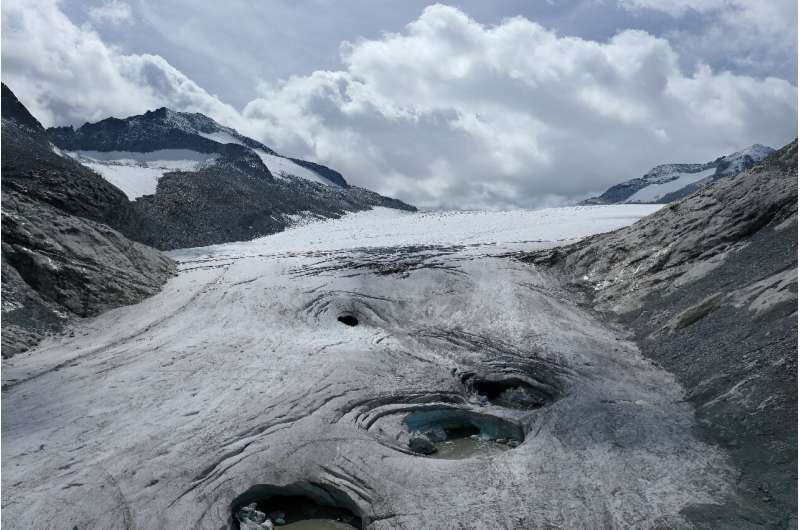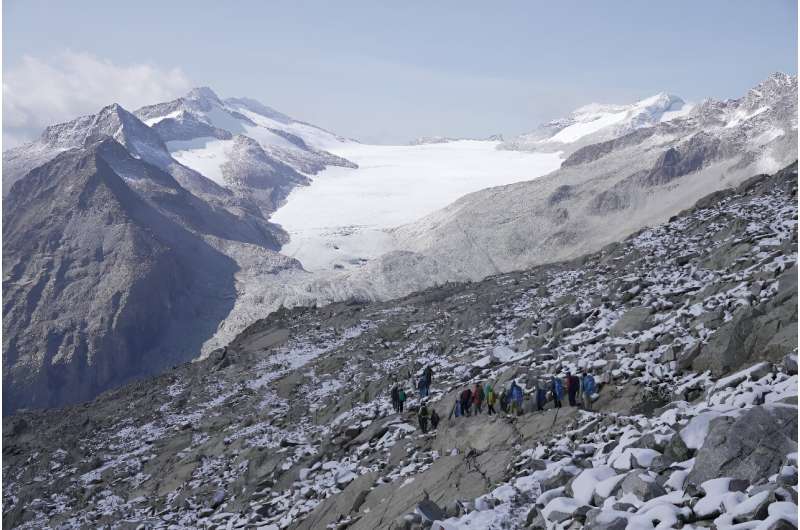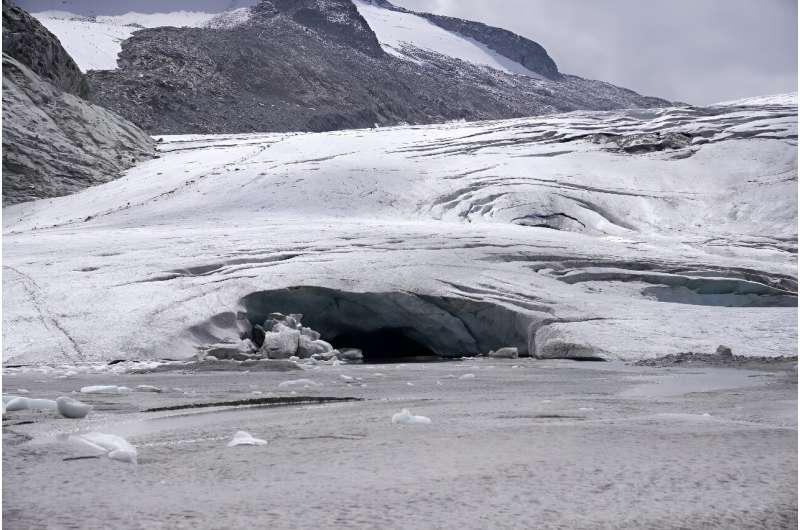This article has been reviewed according to Science X's editorial process and policies. Editors have highlighted the following attributes while ensuring the content's credibility:
fact-checked
reputable news agency
proofread
Measuring the retreat of Italy's largest glacier

The Adamello glacier, the largest in the Italian Alps, is slowly being destroyed by global warming, with experts giving it less than a century to survive.
"From the end of the 19th century until today, the glacier has lost approximately 2.7 kilometers," said Cristian Ferrari, president of the Glaciological Commission of the Tridentine Alpinists Society.
"In the last five years, we have had average losses of 15 meters per year. But last year alone (2022) we saw the loss of 139 meters in a year."
Every summer for the past four years, Italian environmental association Legambiente has organized a journey across the Alps to illustrate the effects of climate change on glaciers.
Like other Alpine glaciers, the Adamello is suffering from reduced snowfall—down 50 percent last year.
The snow cover is thinner, and longer and hotter summers give it less time to freeze.
The glacier is also splitting, proving more surface area exposed to the hot air.
It has also exposed traces of the mountains' history, as the scene of fierce battles between Italian and Austro-Hungarian fighters during World War I.
Today, rifles and shell cases emerge from the melting ice.
"We read the traces of the past, we read the traces of the present and we recognize that the trend is not positive," said Marco Giardino, vice president of the Italian Glaciological Committee and a professor at Turin university.

"Because the blocks that we see fall today will transform that part of the glacier into a glacier covered with debris, and it will destabilize the side of the mountain."
Legambiente's annual "caravan" through the mountains, involving scientists and environmentalists, has covered several glaciers in the past four years.
"Last year we wanted to return to the glaciers we observed two years previously, and the change that we saw was incredible," said its manager for the Alps, Vanda Bonario.
Last year was marked by drought and heat "but we saw situations that I couldn't have imagined".
The Forni glacier in Lombardy, for example, had retreated by more than 100 meters, she said.
"They (glaciers) truly convey to us to us an incredible impression of how climate change has accelerated, of the intensity of events, that is, everything is moving quickly."

According to the UN's Intergovernmental Panel on Climate Change (IPCC), temperatures in this part of the Alps will increase between one and three degrees Celsius in 2050 and between three and six degrees by the end of the century.
At this rate, the Adamello glacier could disappear before the end of the century.
© 2023 AFP




















